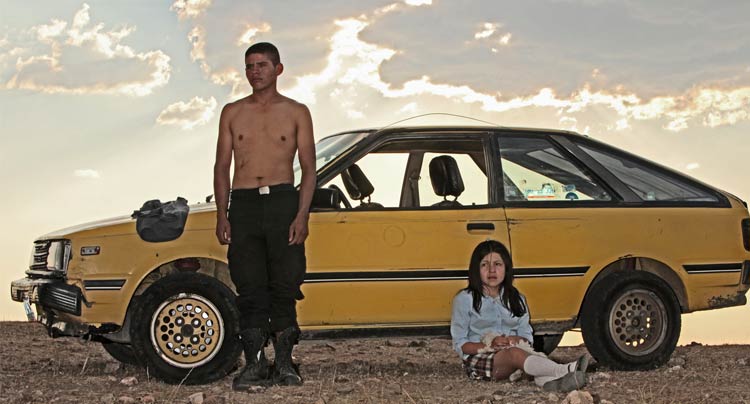
Repetitive violence has a numbing effect in this look at the Mexican drug cartel.

Repetitive violence has a numbing effect in this look at the Mexican drug cartel.
From the start, Heli establishes the brutality and transparency of its setting. Opening with two men lying in the back of a truck, one dead and one barely alive, the drivers hang the corpse over a bridge in the middle of a town. Flashbacks show the man still holding on to life is the title character (Armando Espitia), a young steelworker with a wife and infant son. Heli’s 12-year-old sister Estela (Andrea Vergara) has a secret boyfriend, the 17-year-old cadet in training Beto (Juan Eduardo Palacios), and the two plan to secretly wed before running off together. Beto steals two bricks of cocaine from a recent drug bust, hoping to raise wedding funds by selling them, but it doesn’t take long before the police find out. Estela and Beto hide the drugs at Heli’s place, resulting in all three getting kidnapped and tortured.
Heli’s look at innocent people getting dragged into Mexico’s drug war is reminiscent of Gerardo Naranjo’s Miss Bala, except the two films take different approaches with their elegant camerawork. Naranjo used nonstop violence and action to show the intensity of living in a world where death is always around the corner, while director Amat Escalante prefers to linger. Heli catches up to its opening flashforward only an hour into the film, with the remaining 40 minutes focusing on the psychological effects of what happened to Heli and his remaining family members.

Escalante undoubtedly has a good idea, along with plenty of confidence in his filmmaking to get his points across (it impressed at Cannes last year, earning him Best Director). He uses the film’s desert landscape to full effect, showing how the cartel has nothing to hide, but the filmmaker saves his more damning statements for later. Heli’s most notorious scene, where Heli and Beto are brutally tortured, doesn’t take place in some abandoned warehouse. They’re strung up and brutalized in a living room, while young kids play video games and someone cooks dinner in the kitchen. For the average Mexican household, the horrors of the drug war have evolved from atrocities into banalities.
Banal would be a good descriptor for Escalante’s approach as well. His reliance on long, static shots and sudden, brutal violence make for a rote film, the kind of artsploitation popping up every year in the film festival circuit. Escalante takes the nihilistic route here, highlighting the hopelessness of the entire situation by focusing on institutional corruption or showing how violence and blood lust slowly become a part of Heli. A scene where Heli speaks to a policewoman about investigating what happened ends with the officer exposing her breasts to him, asking “Do you want some?” The scene is surprising, but its effect is laughable.
It isn’t the only time Escalante goes for shocks though; the film earned a reputation at Cannes for its scene of a puppy getting its neck snapped, along with a man getting lighter fluid poured on his genitals before they’re set on fire. These scenes, clearly meant to shock viewers, don’t really leave much of an impact. For all of its political and social messages, Escalante isn’t the only filmmaker using these kinds of tactics to get a rise out of audiences. It’s an uninspired approach, one that ends up evoking a more apathetic response than an outraged one. It’s too hopeless and overdone to generate anything more than a shrug.